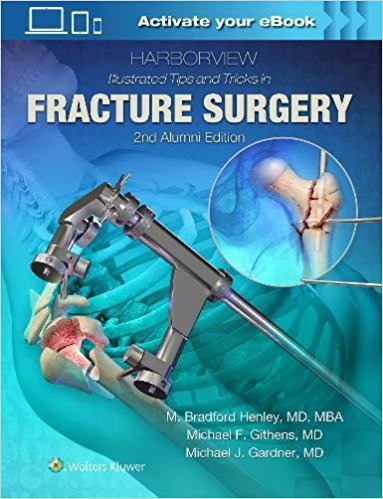|
|
|
| |
 |
|
|

|
 推薦指數:
推薦指數:





|
|
- 內容介紹
|
Harborview Illustrated Tips and Tricks in Fracture Surgery Second Edition
by M. Henley MD (Author, Editor)
Hardcover: 744 pages
Publisher: LWW; Second edition
Language: English
ISBN-10: 1496355989
ISBN-13: 978-1496355980
2019
In this significantly expanded “Alumni” edition, graduates of the Orthopaedic Trauma program at the University of Washington’s renowned Harborview Medical Center provide succinct and novel tips and tricks gleaned from their years of professional practice. Focusing specifically on the technical aspects of fracture treatment, Harborview Illustrated Tips and Tricks in Fracture Surgery, Second Edition takes a unique issue/solution approach, offering up-to-date guidance you can apply quickly to a care situation with the full trauma team.
New chapters touch on fractures of the femur, hardware removal, and navicular and cuboid fractures.
Expanded with significantly more tips than the previous edition—all contributed by graduates of Harborview’s Orthopaedic Trauma Fellow program.
Features to-the-point instructions on the latest techniques to treat fractures of the neck, arm, wrist, ankle, foot, knee, and leg in a fast-paced trauma setting.
Chock full of tables and annotated illustrations for a visual context to techniques and the underlying anatomy.
Concise bulleted format and standardized organizational structure help you grasp critical material quickly.
Topics cover required instruments, optimal patient positioning, imaging, hardware and implants, fixing and setting, and fracture reduction.
Perfect for orthopaedic surgeons, trauma surgeons, and orthopaedic surgery residents learning to treat patients in a trauma setting.
Enrich Your eBook Reading Experience with Enhanced Video, Audio and Interactive Capabilities!
Read directly on your preferred device(s), such as computer, tablet, or smartphone.
Easily convert to audiobook, powering your content with natural language text-to-speech.
Adapt for unique reading needs, supporting learning disabilities, visual/auditory impairments, second-language or literacy challenges, and more.
|
|
|

